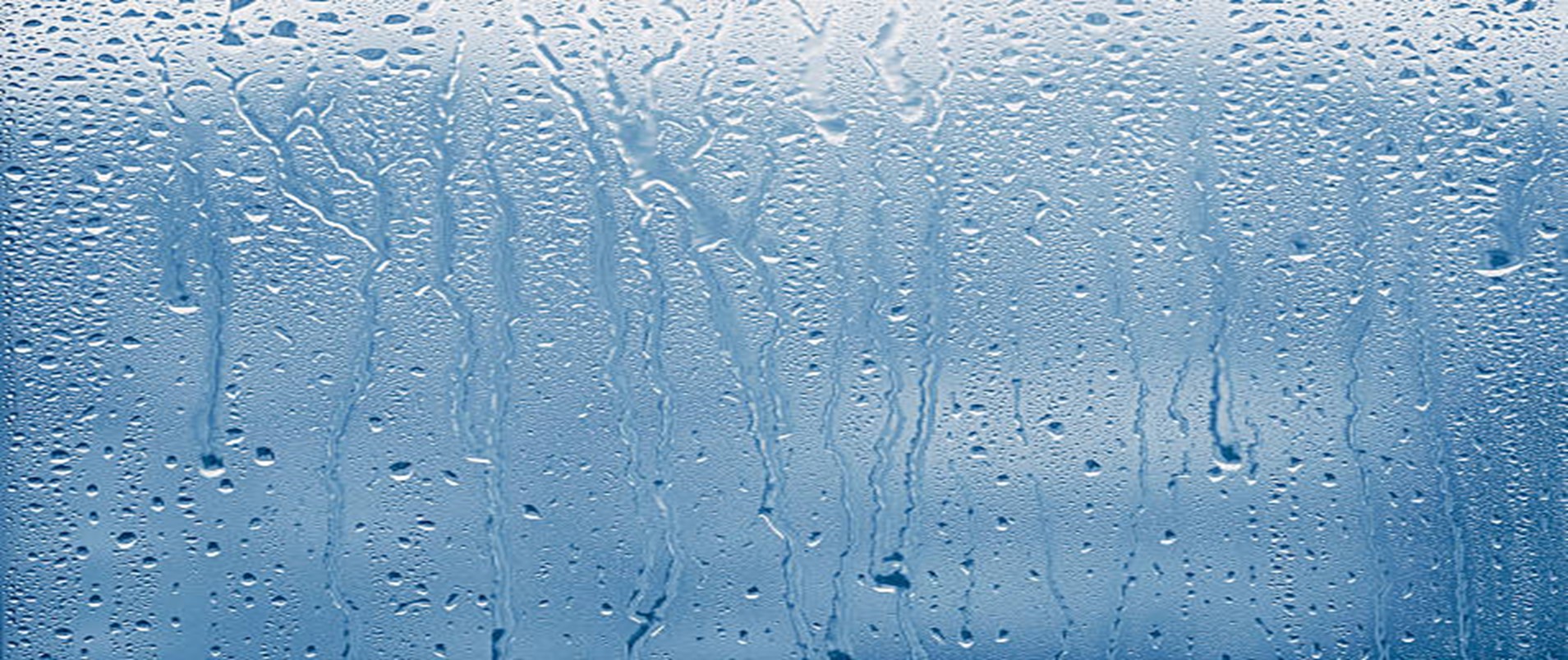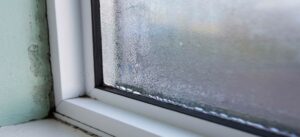
Condensation is the single biggest source of damp problems in homes with as many as 1 in 5 homes affected by the problem. The effects of prolonged condensation issues within a dwelling can often cause thousands of pounds of cosmetic damage to walls, windows, carpets and soft furnishings. Homeowners often remedy the effects by repainting without addressing the issue at the core.
Cosmetics are not the only problem, condensation often leads to mould which will reduce indoor air quality (IAQ) and negatively affect the health of the occupier, especially those with existing respiratory issues.
So, what is condensation?
In simple terms condensation is the process where water vapor becomes liquid when humid air touches a cold surface.
We create warm moist air continually throughout the day, cooking, showering, cleaning, clothes washing and breathing. On average, per day, each household member is responsible for adding 5 litres of moisture into the indoor air. This warm moist air then condenses when it lands on cold surfaces, most commonly seen on bathroom widows after a shower.
Unfortunately, our wintery climate also plays a big part in the build up of condensation. We heat our dwellings and, in an attempt, to keep the heat we close windows, window trickle vents, wall vents. In doing so we moisture we create within the dwelling that cannot escape.
Signs of Condensation
- Water gathering on windows
- Black mould
- Peeling plaster, wallpaper and paint
- Damp smell
How to prevent Condensation
Ventilation will be key in preventing and addressing any condensation issues that you have. If you have existing window trickle vents, wall vents or extractor fans make sure they are open and in working order.
- Do not dry clothes in an unvented area.
- Cook with your cooker hood extractor fan on, make sure that the filters are kept clean to allow the moist air to be extracted.
- When showering, make sure your bathroom fan is on and that it runs on after you finish. A traditional bathroom extractor fan will be on/off with your light switch, if this is not enough you will benefit by upgrading to a bathroom fan that boosts when there is increased humidity in the air. This means that the fan will stay on until the moist air is removed.
- Prolonged periods of relative humidity in excess of 70% greatly increases the probability of condensation and mould growth on cold surfaces. House dust mites and black mould thrive at relative humidity levels above 70%.
Alternately, a decentralised mechanical extract ventilation system known as a DMEV, works by continuously extracting air at a very low and often silent rate even when the bathroom is not in use and boosts when automatically required. This continuous extract ensures that you always have fresh air coming into the dwelling via your existing window trickle vents or wall vents.
Retro fit ventilation systems for condensation control
Positive Input Ventilation systems or PIV systems are an effective means of condensation control. They force fresh filtered air into a dwelling to dilute, displace and replace the internal stale, humid air.
The Brookvent airplus is a loft mounted, ultra-quiet, low energy, low maintenance PIV with optional preheater.
External air is drawn into the loft by the airplus unit. Before it passes through the unit’s filter the air increases in temperature as it utilises otherwise unused energy in the loft from solar gain and heat loss from the home. This increase can be significant, but it is typically around 3 degrees Celsius warmer than outside air over a heating season. This energy gain is significantly more than the energy used by the unit’s motor.
The tempered, filtered air is then supplied centrally to the home via the unit’s outlet duct and ceiling diffuser. No additional ducting is required. Integral controls allow the airplus unit to be set to suit individual requirements of the home.
Airflow from the unit to the home is automatically regulated via an integral temperature sensor which optimises the energy benefit of the unit while ensuring that sufficient air is always supplied to help control moisture and other pollutant levels in the home. The system also works well in conjunction with airstream DMEV and window vents which helps to draw the fresh air from the PIV for improved cross flow ventilation.
New build ventilation solutions
Installing a Mechanical Ventilation with Heat Recovery or MVHR is the most effective means for new builds to ensure that condensation does not become a problem when building an airtight home.
An MVHR acts as the buildings lungs by efficiently recovering heat from the air extracted wet rooms that would normally be expelled to the atmosphere.
This heat is then transferred to the fresh air being drawn into the system, which is then filtered and distributed throughout the habitable rooms.
The aircycle MVHR range can significantly reduce the space heating demand of a property whilst also delivering a healthier and more comfortable indoor environment free from condensation.








